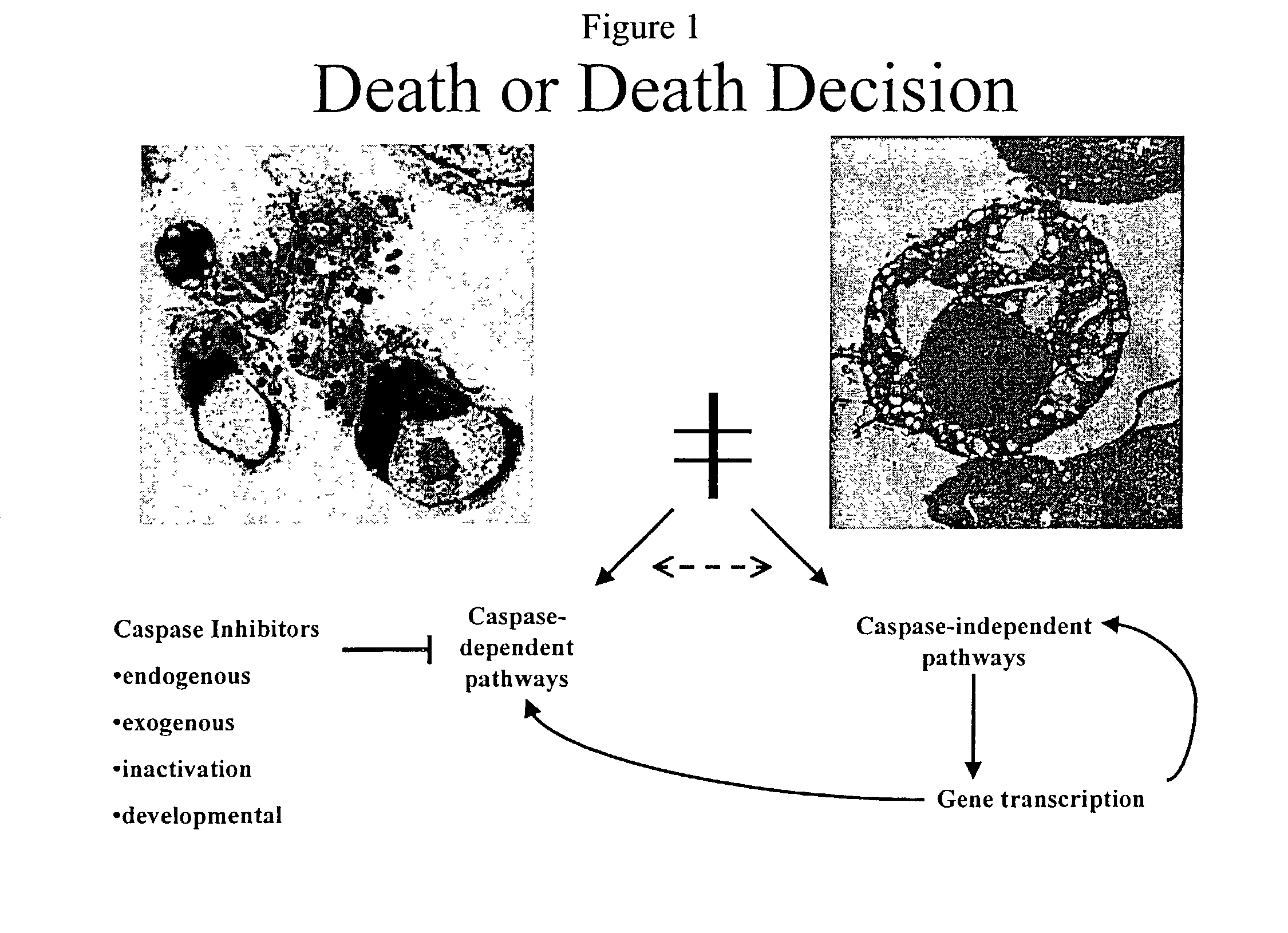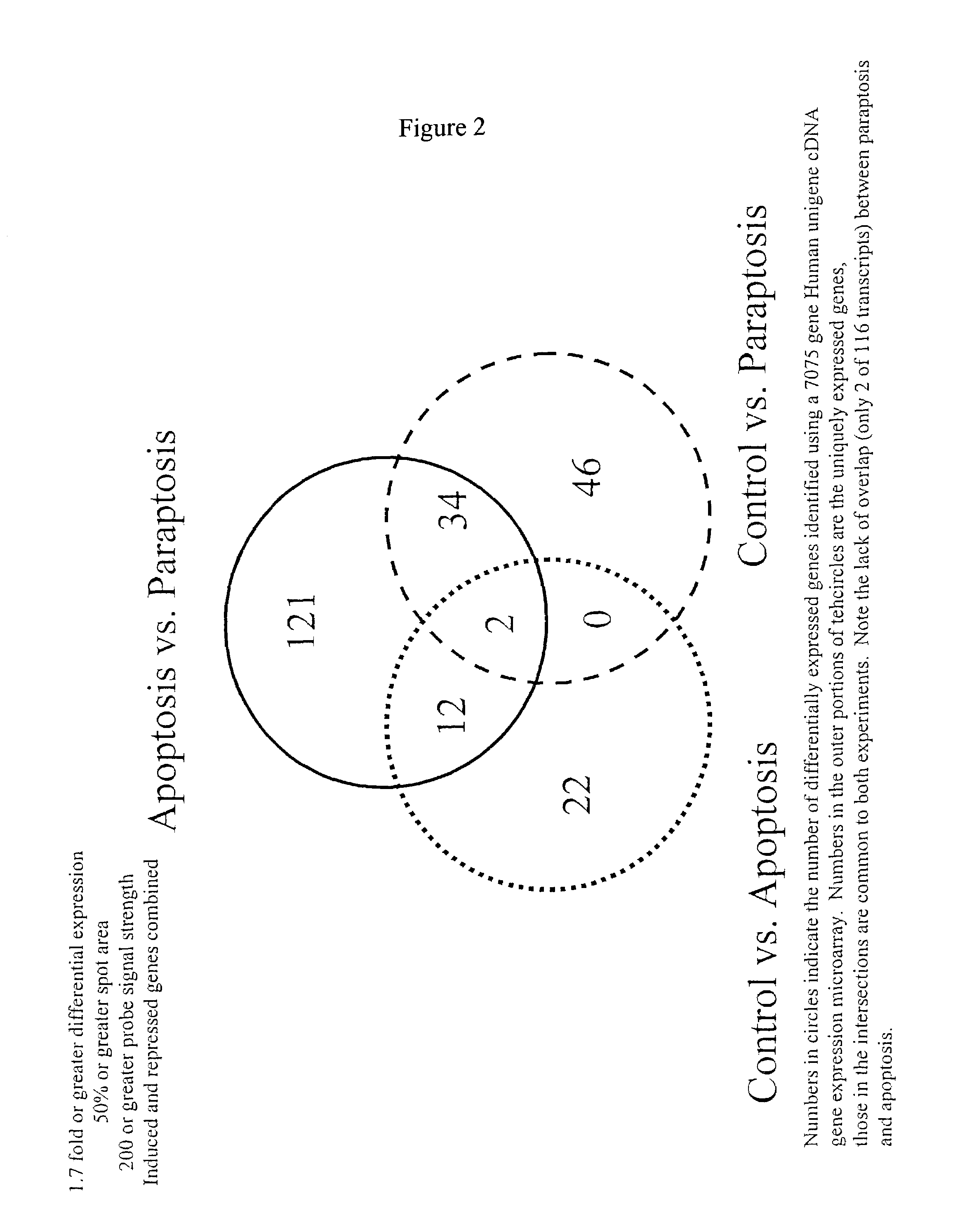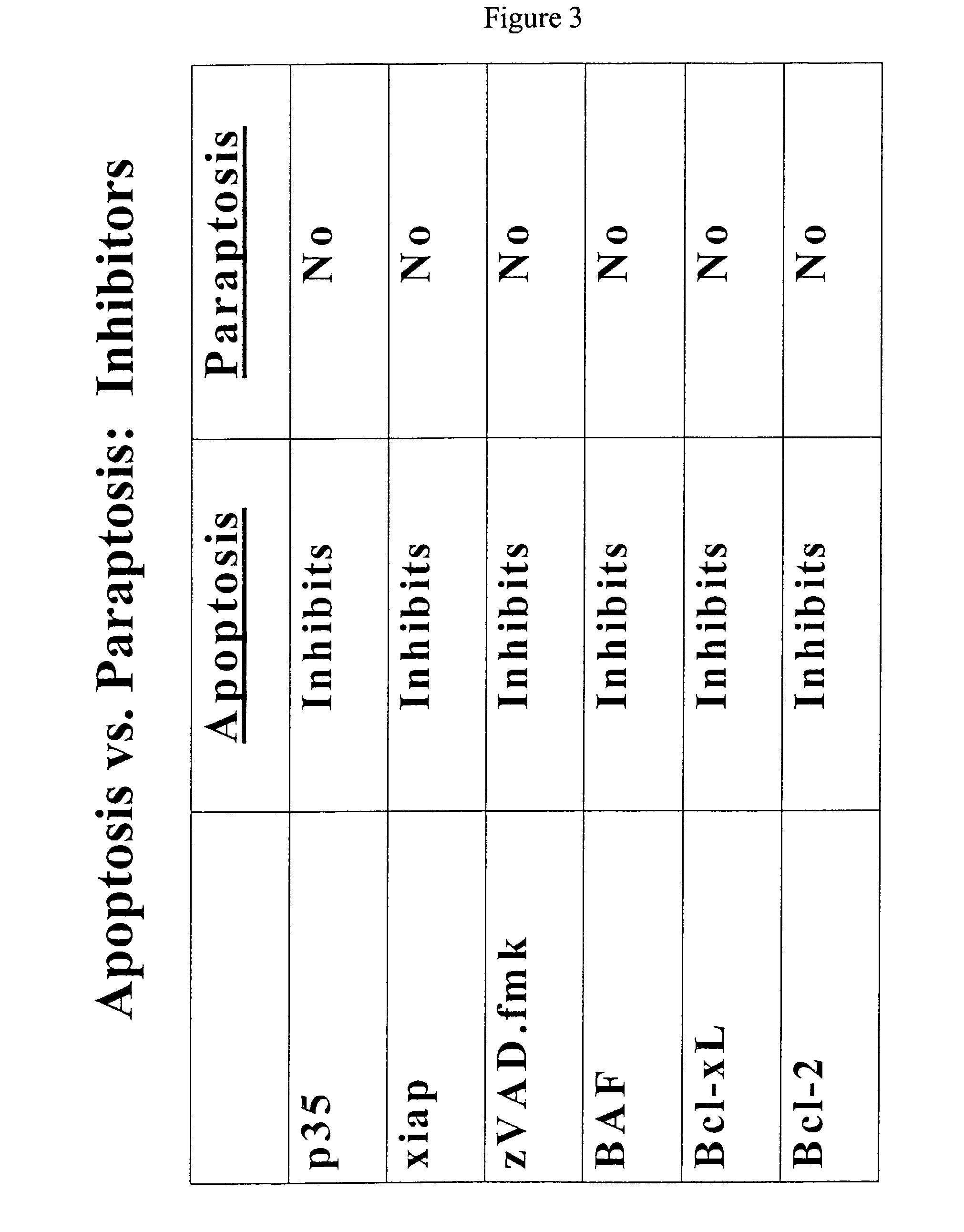Modulators of paraptosis and related methods
a paraptosis and module technology, applied in the field of molecular medicine and programmed cell death, can solve the problems that the modulation of the apoptotic pathway genetically or pharmacologically may prove ineffective in situations in which such nonapoptotic cell death occurs, and achieve the effects of inhibiting paraptotic cell death, increasing sp-induced paraptosis, and decreasing sp-induced paraptosis
- Summary
- Abstract
- Description
- Claims
- Application Information
AI Technical Summary
Benefits of technology
Problems solved by technology
Method used
Image
Examples
example i
Inducers of Paraptosis
[0151]This example demonstrates the identification of agents capable of inducing paraptotic cell death.
[0152]Human embryonic kidney 293T cell line cells were used to assay for inducers and inhibitors of paraptosis. These cells were cultured in high glucose DMEM (Life Technologies) supplemented with 10% FBS (Sigma) and 1% penicillin / streptomycin (Life Technologies). The cultures were incubated at 37° C. in 95% air 5% carbon dioxide with 95% humidity.
[0153]Rat neuronal primary cell cultures were also used to assay for inducers and inhibitors of paraptosis. Briefly, primary striatal, cortical and hippocampal cultures were prepared from 17-day-old Sprague-Dawley rat embryos (B&K). The tissue was dissected, minced and trypsinized for five minutes using 0.25% trypsin (Cell Grow). After the addition of 10% horse serum (Life Technologies) to inhibit the trypsin, the cell suspension was triturated 15–20 times with a 10 ml syringe and centrifuged for five minutes at 800×...
example ii
Inhibitors of Paraptosis
[0162]This example demonstrates the identification of agents capable of inhibiting paraptotic cell death.
[0163]Paraptosis was induced in 293T cells by expressing the intracellular domain of the insulin-like growth factor I receptor (IGFIR-IC) in these cells using transient transfection as described above.
[0164]Test compounds were added to IGFIR-IC transfected 293T cells at the time of transfection. The copper chelator, 1–10-phenantroline (ortho-phenantroline) was able to inhibit IGFIR-IC induced paraptosis when added to transfected 293T cells at a concentration of 50 nM. In addition, H89, an inhibitor of protein kinase A, was able to inhibit IGFIR-IC induced paraptosis when added at a concentration of 10–20 μM. Furthermore, 1–10-phenantroline was able to inhibit paraptosis induced by caspase 8 or caspase 9.
[0165]In addition, AIP-1 (Alg-2 interacting protein 1) and a dominant negative mutant of TRAF2 were able to inhibit IGFIR-IC induced paraptosis when co-tra...
example iii
A Ligand-Receptor Pair that Triggers a Non-Apoptotic Form of Programmed Cell Death
[0166]This example demonstrates that substance P (SP) can induce a form of paraptosis through the neurokinin 1 receptor (NK1R).
[0167]Striatal, cortical, and hippocampal neurons were sensitive to micromolar concentrations of SP 48 hours after exposure to SP (FIG. 6A) whereas fibroblasts were resistant to micromolar concentrations of SP. In addition, these neurons were sensitive to nanomolar concentrations of SP seven days after exposure (FIG. 6B). Note that SP was added only once at the beginning of the experiment.
[0168]The toxicity of SP observed with neuronal cells in comparison to fibroblasts was receptor-dependent, since the L form of SP induced cell death while the D form of SP had no effect on cell death (FIG. 6A). In order to determine if the neurokinin 1 receptor (NK1R) was the mediator of SP-induced neuronal cell death, two different antagonists for NK1R, L-732,138 which is a competitive antago...
PUM
| Property | Measurement | Unit |
|---|---|---|
| humidity | aaaaa | aaaaa |
| humidity | aaaaa | aaaaa |
| pH | aaaaa | aaaaa |
Abstract
Description
Claims
Application Information
 Login to View More
Login to View More - R&D
- Intellectual Property
- Life Sciences
- Materials
- Tech Scout
- Unparalleled Data Quality
- Higher Quality Content
- 60% Fewer Hallucinations
Browse by: Latest US Patents, China's latest patents, Technical Efficacy Thesaurus, Application Domain, Technology Topic, Popular Technical Reports.
© 2025 PatSnap. All rights reserved.Legal|Privacy policy|Modern Slavery Act Transparency Statement|Sitemap|About US| Contact US: help@patsnap.com



